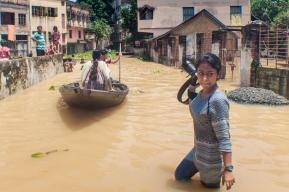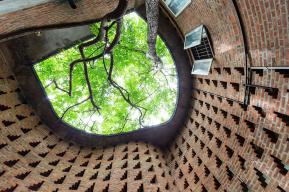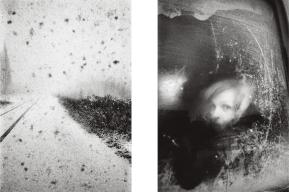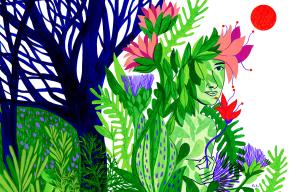Idea
Jens Liljestrand: “I wanted to capture the feeling of anger in the face of wildfires”

Interview by Anuliina Savolainen
UNESCO
In your novel Even if everything ends, Sweden is hit by a climate disaster. How did the idea for this story come about?
The novel was influenced by the historic forest fires of summer 2018. Throughout Sweden there were giant wildfires of a scale that no one had ever seen before. And of course these fires are just a prelude to what we all know is going to come. So in 2019 I started writing a dystopian novel that takes place in the future. At the time it was all the talk about how we only had a dozen years to limit climate catastrophe. This was the point of departure for my novel: What's life going to be like in 12 years? This would be around 2030, a decade from the moment I started writing. But every week the moment came closer, and when I finished the book, I realized that this is not the future, this is now. So it ended up being a contemporary novel.
A lot happened during the two years of the writing process. Climate disasters such as massive wildfires in Australia, California, and Northern Canada but also, after the book was finished, in France and Spain. However, my main inspiration remained the 2018 summer in Sweden. How people were shocked and couldn't believe that this was happening. And this despite the fact that scientists had been warning about the effects of climate change for decades. I wanted to capture this feeling of disbelief, frustration and anger.
Amid wildfires and societal chaos, the characters continue to navigate their private life turbulence as best they can. Why did you choose to focus on ordinary people’s experiences?
The story follows the reactions of a couple of characters who are not all directly involved in the fires, but they are affected by the consequences. I wanted to depict the very complex set of feelings climate change creates. It’s scary, it's frightening, and it’s shocking. It also makes you sad. It makes you angry, wishful, melancholic. It can also make you want to do something, react, get involved – or to deny that this is happening at all, or say that maybe it’s not so bad, maybe there’s just nothing we can do about it.
I think all of us have, to some degree, some of these emotions. So each of the main characters sort of encapsulates one set of those feelings. One reacts with shock and panic, desperation. Another one, arrogant and in denial. And then there's the sad and angry person who feels that someone should pay the price. And finally, there’s the one who acts in a constructive way and represents resistance.
There’s a false sense of safety that collapses because people see that even as a rich country we are not excluded from the effects of climate change.
There’s a false sense of safety that collapses because people see that even as a rich country we are not excluded from the effects of climate change
Against the bigger picture, the disappointment, shock and bewilderment become almost comical, but it’s also amazing also how quickly people stop caring. Just like in the novel: suddenly the rain falls and the fires are extinguished, people move on.
Now more than ever, novelists are facing up to the climate crisis with ‘climate fiction’. Do you see fiction as a means of combating climate change?
This novel is not a wake-up call. If you still don't believe in climate change, fiction is not going to help you. I did not write the novel to educate or to be part of the climate debate; the debate should be scientific or political. But it’s important that climate change is talked about.
Obviously, journalists should be the ones reporting about dying coral reefs and telling stories about melting glaciers. But to put words on experiences such as how it feels to tell your child that they're never going to see a coral reef – that's where you need a different set of tools. That’s where art comes in. To help people put words or images on what they’re feeling and experiencing and to create a space for a dialogue. Art can influence a mentality and help us to understand in a deeper way. Through this novel, I wanted to contribute to the development of a culture that helps people cope with climate change.
I'm surprised that there is not more climate fiction. We are in the middle of the worst challenge that humanity has ever faced, but this apocalyptic feeling is not resonating in culture. I think that there is a mission there for artists of all kinds to try and grasp that sense of fear, panic, desperation, sadness, anger, longing and nostalgia.
We are in the middle of the worst challenge that humanity has ever faced, but this apocalyptic feeling is not resonating in culture
Since the novel is out I have also been invited to talk in schools where I have met young people with a great deal of climate-related stress. What I’m trying to tell them is that although they will very probably live in a world with huge challenges, they will also have enormous opportunities to do things and to live in a way that is more respectful of ecosystems. These are going to be hard times, but I think there's also a lot to be hopeful about.
When I was a child, there were no longer wolves in Sweden. Now they are back. In southern Sweden, where I grew up, there was one single eagle on an island, and now there are eagles everywhere there. People are also realizing the incredible value of green areas – there’s a huge trend to make inner cities green. So these things are happening as well. There’s a possibility to live on a planet where humanity is reconstructing ecosystems. We shouldn’t give up.

In the same issue









